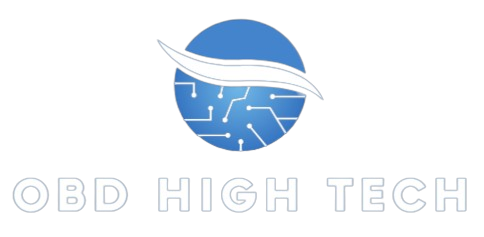Introduction
In the digital age, data is both an asset and a challenge for businesses aiming to capitalize on its potential while managing its growth. Practical, scalable storage solutions are paramount as organizations accumulate and rely more on data for decision-making and operational purposes. Storage as a Service (STaaS) emerges as a transformative model that allows businesses to focus on strategic priorities by outsourcing their storage needs to expert providers. This approach streamlines IT operations and empowers organizations to reduce costs and improve efficiencies significantly. As companies recognize the potential of STaaS, it becomes a key component in maintaining agility and competitiveness in an ever-evolving technological environment.
Understanding STaaS
STaaS, or Storage as a Service, represents a modern approach to handling data storage by outsourcing it to third-party providers. Unlike traditional storage methods that require significant capital investment in infrastructure and ongoing maintenance, STaaS offers a subscription-based model that aligns storage needs with operational budgets. Businesses enjoy the flexibility of scaling storage requirements seamlessly, ensuring cost efficiency and adaptability to changing demands. This model reduces financial risks associated with purchasing and maintaining physical Storage and provides access to the latest technological advancements in storage solutions. By understanding the full scope of STaaS offerings, organizations can better assess how it fits into their data management strategy and ultimately learn more about the advantages of this model.
Benefits of STaaS
The shift to STaaS brings numerous benefits, foremost of which is the reduction in capital expenditures associated with purchasing storage infrastructure. Organizations can redirect resources toward their core business activities instead of investing heavily in hardware and dealing with its depreciation and obsolescence. Furthermore, STaaS provides access to cutting-edge technologies and storage solutions without additional financial commitments. This ensures businesses remain competitive and technologically advanced without enduring hefty upgrade cycles. Additionally, STaaS contributes to operational resilience by offering offsite data storage solutions that protect against local disruptions, ensuring business continuity even during adverse situations. This decentralized approach enhances data security and allows for better disaster recovery mechanisms.
Streamlining IT Operations
Organizations adopting STaaS can reallocate their IT resources toward strategic initiatives, lifting the burden of managing complex storage systems. The expertise of STaaS providers in handling data backup, security, and disaster recovery means companies can benefit from specialized knowledge and focus on driving innovation in their core business areas. As IT staff are freed from routine storage maintenance, productivity improves, and the organization can better respond to market opportunities. Additionally, many STaaS providers offer sophisticated monitoring and management tools, providing real-time insights and analytics into storage usage, which inform better business decisions. This integrated approach to storage management fosters efficiency and positions organizations to leverage data as a competitive asset.
Reducing Overhead Costs
Adopting STaaS substantially reduces overhead costs beyond initial capital savings. By outsourcing Storage, organizations minimize expenses associated with energy consumption, equipment maintenance, and system upgrades. Additionally, reducing required IT staffing for storage management lowers personnel costs and aligns operational expenses with service usage. This leads to financial savings and allows organizations to invest in areas that directly contribute to growth and profitability. The flexible pricing model of STaaS, such as pay-as-you-go or tiered options, ensures businesses only pay for the Storage they use, avoiding inefficiencies that come with maintaining excess capacity—this alignment of cost with actual usage results in a more sustainable financial model, maximizing budget allocations.
Enhancing Flexibility and Scalability
One of the standout features of STaaS is its capacity to offer unparalleled flexibility and scalability. Businesses can effortlessly adjust their storage requirements in response to data growth or evolving project needs without incurring downtime or additional capital expenditure. This scalability ensures that resources are optimized, enabling companies to expand or contract their storage capabilities as required. Such adaptability is crucial in today’s fast-paced market, allowing organizations to remain agile and responsive to new opportunities or challenges. Furthermore, this flexibility extends beyond mere storage capacity; many STaaS solutions offer customizable data management options, ensuring businesses can tailor services precisely to their operational demands and goals.
Improving Data Management and Accessibility
With STaaS, organizations gain sophisticated data management capabilities, improving the accessibility and utilization of their information troves. Advanced analytics and visualization tools provided by STaaS vendors aid in interpreting complex datasets, facilitating data-driven decisions that propel business growth. Moreover, STaaS enables centralized data management, ensuring cohesive access across various departments without resource duplication or inconsistencies. This streamlined access fosters greater collaboration and empowers decision-makers throughout the company by providing timely and relevant data insights. A cohesive data management strategy ultimately enhances organizational alignment and helps inculcate a culture where data is integral to strategic planning and implementation.
Ensuring Security and Compliance
In an era of data breaches and regulatory scrutiny, STaaS stands out by placing a premium on data security and compliance. Providers deploy state-of-the-art encryption methods and stringent access controls and frequently update security measures to counteract ever-evolving threats. Additionally, they ensure compliance with industry-specific regulations such as GDPR or HIPAA, providing clients confidence that their data storage practices meet required standards. This mitigates the risk of data breaches and protects organizations from the reputational and financial damages associated with non-compliance. By entrusting Storage to a service provider, companies can focus on their core operations, knowing that data security and compliance are expertly managed.
Conclusion
Incorporating Storage as a Service (STaaS) into an organization’s IT strategy heralds a new era of efficiencies and cost savings. By transferring traditional storage management’s complexities and cost burdens to specialized providers, businesses can focus on innovation and strategic initiatives. The inherent flexibility, scalability, and security of STaaS make it an appealing solution for organizations seeking to streamline operations and minimize overhead. As the digital landscape continues to evolve, embracing STaaS positions businesses to navigate future challenges with agility and resilience, assuring sustained competitiveness and success.

